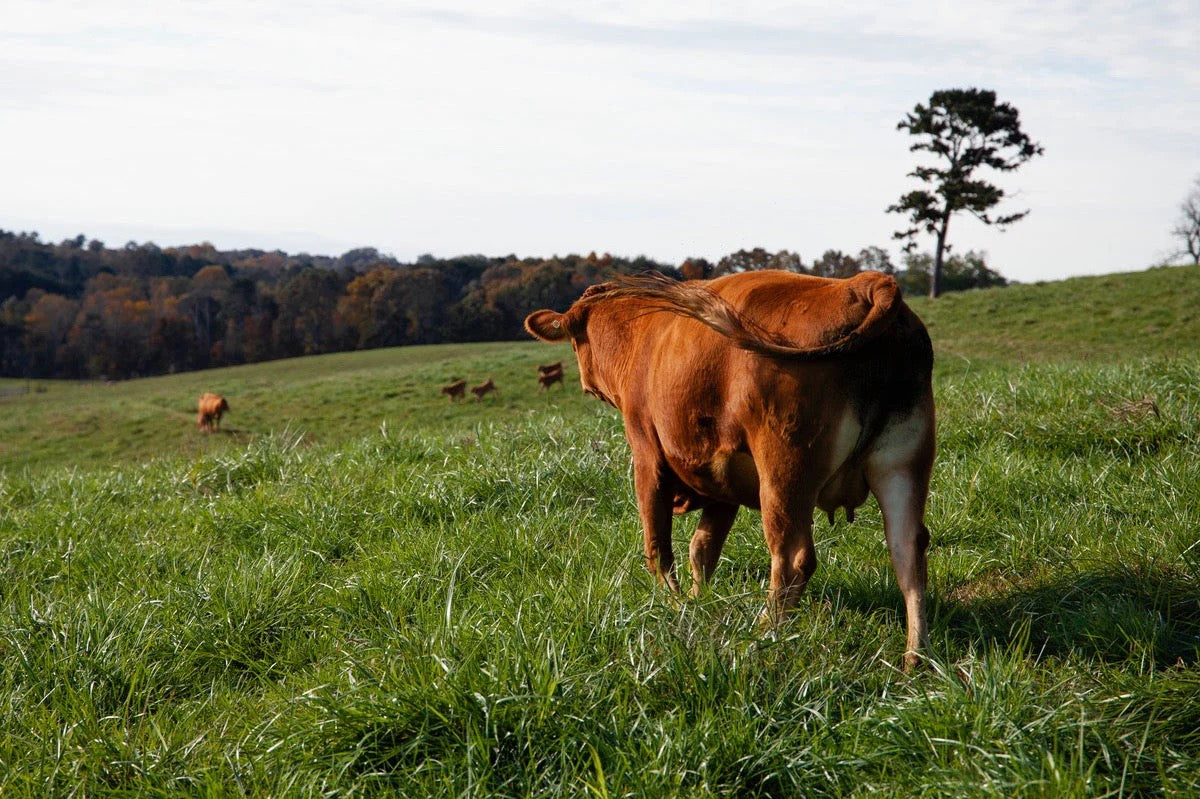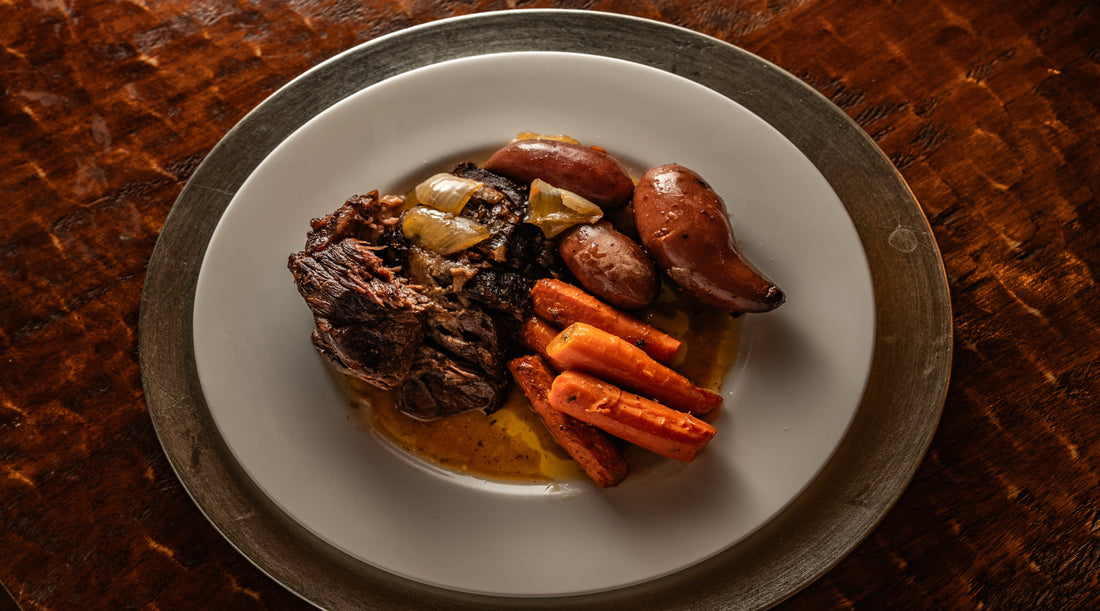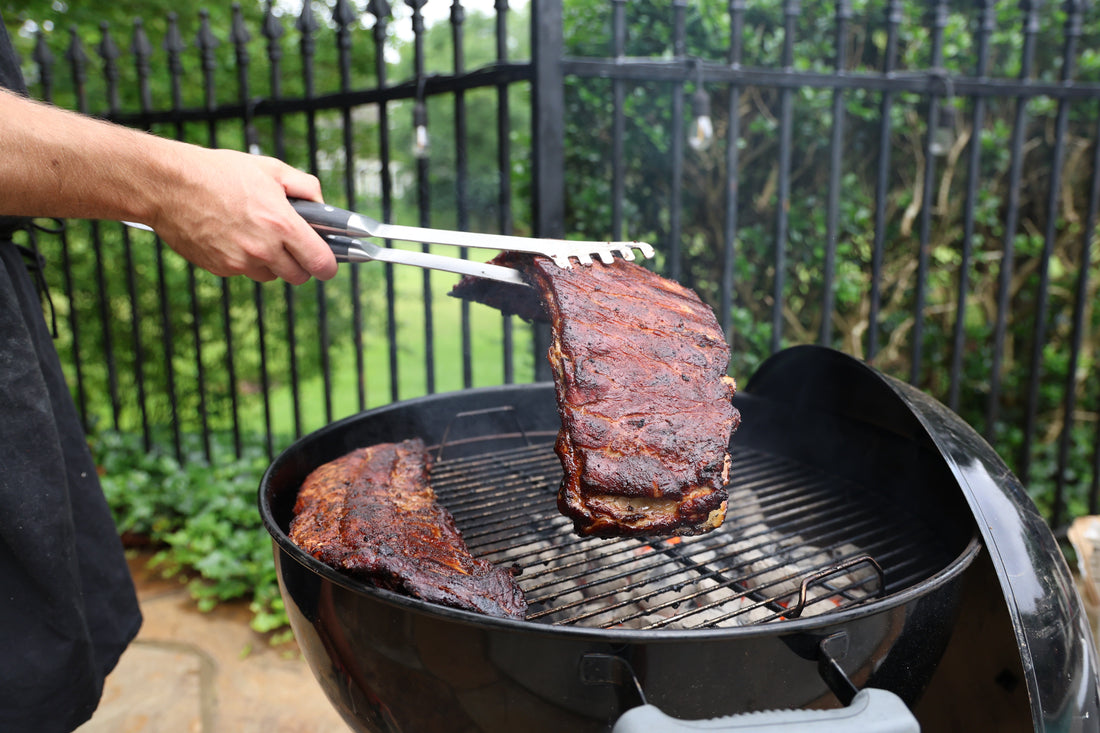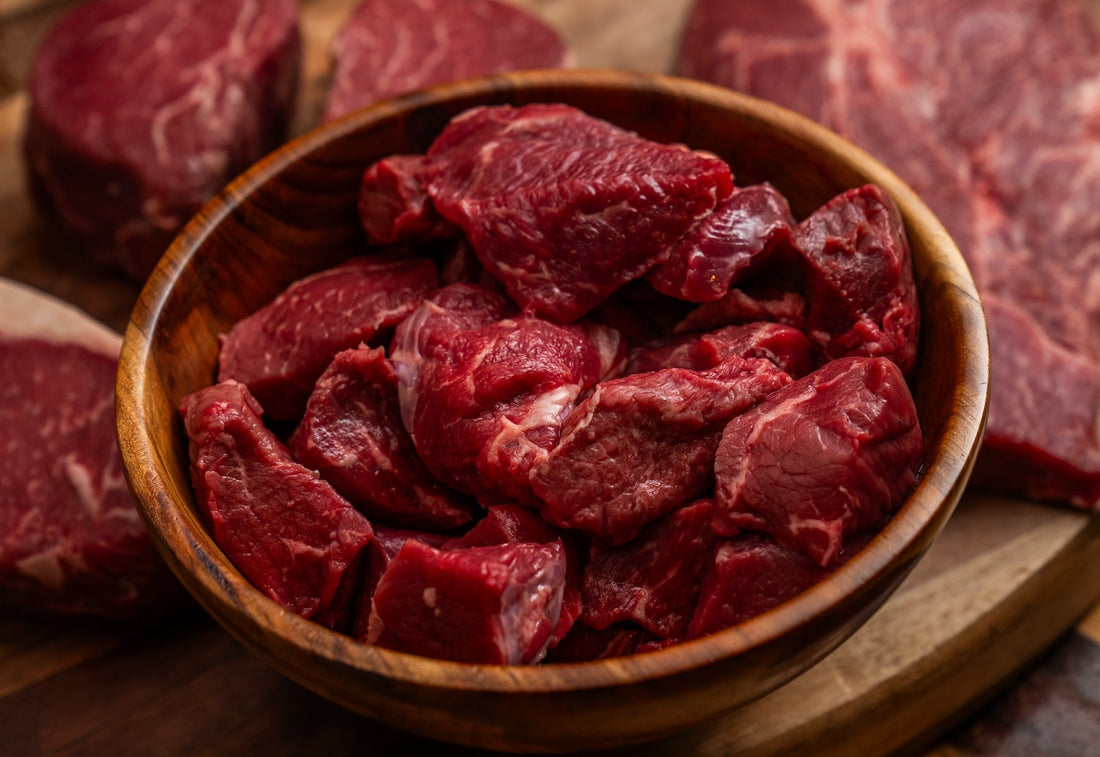Thinking about buying a half cow?
More and more people want to buy a half cow because of the advantages are tremendous:
- Cost savings
- No additives
- High-quality meat
- Ethically sourced
- …just to name a few
But will it fill your freezer? Will you have enough steaks for all those BBQs you're dreaming about? How many steaks are we talking about? What kinds?
We're here to make it all super clear. We'll show you exactly what steaks you'll get, how many, and even why you should get a half cow.
You’ll get the juicy details on everything from ribeyes to T-bones.
Understanding a Half Cow
So, how many steaks are in a half cow?
On average, once processed, you'll end up with about 200 pounds of beef, and about 85 pounds are steaks and roasts. That means around 45-60 cuts of steaks—depending on the exact cuts and sizes of the steaks.
That's like filling your freezer with enough meat for many family dinners, BBQs, and more.
Now, onto the costs.
With our Grass Fed 1/2 Cow, our standard price is $2,600, approximately 200 lbs.
But with some dealers, they might price it per pound of hanging weight.
Let's say it's $5 per pound. If your half cow's hanging weight is 300 pounds, the math goes like this: 300 pounds times $5 equals $1,500.
But remember, you're not taking home 300 pounds of ready-to-cook meat.
So, what is a "hanging weight?”
It's the weight of the cow part right after it's been hung up and cleaned, but before it's been cut into all those steaks and roasts you love.
This weight is more than the meat you take home because it includes bones, fat, and parts you don't eat.
Usually, about 60% to 70% of that hanging weight turns into the meat you cook. The rest is bones and fat that get trimmed away.
So for example, from that 300-pound hanging weight, you'll end up with roughly 180 to 210 pounds of beef for your freezer.
Understanding these details means no surprises when it comes to filling your freezer or planning your budget.
Breakdown of Cuts from a Half Cow
So, how much meat is half a cow?
Your half cow is split into two big parts: the front quarter and the hind quarter.
Each part gives us different kinds of cuts.
- Front Quarter: Think of this as the cow's shoulder and chest area. Here, you'll find cuts like chuck roasts, brisket, and rib steaks. These cuts are perfect for slow cooking, making them tender and juicy.
- Hind Quarter: This is the back half of the cow, where the magic happens for steak lovers! It's where you get those fancy steaks like sirloins, T-bones, and filets. These cuts are great for grilling and quick cooking.
What to Expect
Different companies do this differently, but for the sake of example, here’s our breakdown what you get from a half cow:
- Ground Beef 80/20 Lean/Fat (115 lbs. in 1 lb. packages)
- Filet Mignon - (6 ea 8oz. steaks)
- New York Strips (8 ea 12oz. steaks)
- Ribeye (10 ea 12oz. steaks)
- Flank Steak (1 lb.)
- Skirt Steaks (4 lb.)
- Stew Meat Packs (8 lbs.)
- Flat Iron (1 lb.)
- Tri-Tip (2 lbs.)
- Sirloin Steaks (6 ea 8oz. steaks)
- Coulotte (2 lbs.)
- Round Roasts (25 lbs.)
- Chuck Roasts (8 lbs.)
- Brisket (7-8 lbs.)
- Bone-In Short Rib Plate (4-6 lbs.)
In total, your half cow transforms into an assortment of beef choices, from the grill-ready steaks to the slow-cooked comfort of roasts and the versatility of ground beef.
This ensures your meals remain interesting and delicious—all from a single, sustainable source.
Freezer Space for a Half Cow
Storing a half cow's worth of meat is a big deal, and you'll need to make sure your freezer is up for the challenge.
Let's dive into how much space you'll need and how to make the most of it.
How Much Freezer Space Do You Need?
As a rule of thumb, you'll need about 8 to 10 cubic feet of freezer space for a half cow.
That's roughly the size of a large chest freezer. Remember, it's not just about fitting everything in; you also want some wiggle room to keep things organized and accessible.
Packing your freezer right can also make a huge difference. Here are some pro tips to maximize space and keep things tidy:
- Use Vacuum-Sealed Bags: They keep air out, preventing freezer burn and saving space.
- Flat Pack: Lay ground beef and other items flat before freezing. Once solid, you can stack them like books.
- Organize by Cut: Keep steaks with steaks and roasts with roasts. It'll make finding what you need a breeze.
- Use Baskets or Bins: These can help you divide your freezer into sections, making it easier to manage.
Keeping Your Beef at Its Best
Long-term storage is all about maintaining quality. Here's how to ensure your beef stays delicious month after month:
- Wrap It Right: If not vacuum-sealed, use freezer paper or heavy-duty aluminum foil to wrap your meat tightly, then place it in a freezer bag.
- Label Everything: Include the cut of meat and the date it went into the freezer. No more guessing games!
- Rotate Your Stock: Use older items first to keep everything fresh. It's the "first in, first out" rule.
By following these guidelines, you'll keep your half cow in prime condition, ready for whenever the craving for a juicy steak or hearty roast hits.
Packaging and Processing for Half-Cow Meat
When you invest in a half cow, you're not just buying meat; you're getting a carefully prepared package, from the butcher's table to your freezer.
Let's unpack the packaging and processing steps to give you a clear picture.
Standard Packaging Practices
The journey of your half cow from farm to freezer is a meticulous process:
- Butchering: Skilled butchers break down the cow into various cuts, separating steaks, roasts, and ground beef.
- Packaging: Each cut is individually wrapped. Steaks and roasts are typically vacuum-sealed, locking in freshness and flavor. This also prevents freezer burn and extends shelf life.
- Labeling: Packages are clearly labeled with the cut and weight, so you know exactly what you're pulling out of the freezer.
- Preparation for Pickup/Delivery: The packaged cuts are then boxed or placed in crates, ready for pickup or delivery. They're kept cold through the entire process to ensure the meat stays fresh.
Custom Packaging Options
Got specific needs? Many butchers offer customizable packaging options. Here's what might be on the table:
- Cut Preferences: Fancy thicker steaks or a particular type of roast? Many butchers will accommodate your preferences.
- Portion Sizes: Whether you're feeding a large family or cooking for one, you can often specify portion sizes that work for you.
- Special Requests: Interested in keeping certain bones for broth or getting your ground beef in specific increments? Just ask!
Safety and Sanitation Standards
Safety first, especially when it comes to food. The meat industry follows strict guidelines to keep things clean and safe:
- Sanitation Protocols: Butcher shops adhere to rigorous sanitation practices, ensuring all equipment and surfaces are sanitized before and after processing.
- Temperature Control: From butchering to delivery, the meat is kept at safe temperatures to prevent any risk of contamination.
- Regulatory Compliance: Butchers and processors must comply with local and national food safety regulations, undergoing regular inspections to ensure they meet all standards.
Understanding the care and attention to detail that goes into packaging and processing your half cow can give you peace of mind, knowing you're bringing home quality, safely handled meat.
Benefits of Buying a Half Cow Compared to Store-Bought Meat
We talked a lot about half cow purchase.
But, why should you even go for half cow?
Here's why:
A Flavor That Stands Out
Grass-fed beef from your half cow has a depth of flavor that grain-fed, store-bought meat just can't match.
This beef is known for its rich, nuanced taste profile, thanks to a natural diet that contributes to a more complex flavor in the meat.
It's like savoring a fine wine—the quality and care in the process make all the difference.
Good for You (and the Planet)
Then there's the health angle:
- Your half cow comes without the additives, dyes, or preservatives often found in store-bought meat. It's pure, wholesome beef, just as nature intended.
- Supporting local farmers who raise grass-fed cattle means you're backing sustainable practices. These farms often prioritize animal welfare and ecological balance, leading to healthier land and happier cows.
- By choosing locally sourced beef, you're cutting down on the carbon footprint associated with transporting meat from far-off places. Less travel means less pollution.
Economical and Practical Wins
Going for a half cow is also a smart move for your wallet and your daily life:
- Cost-Effective: Buying in bulk can lead to significant savings in the long run. When you break down the cost per meal, you'll often find it's cheaper than buying equivalent cuts at the supermarket.
- Variety at Your Fingertips: With a range of cuts from steaks to roasts and ground beef, meal planning becomes both easier and more exciting. You've got options for every occasion, right in your freezer.
- Connect with Your Food: Knowing where your beef comes from and the care taken in raising and processing it adds a level of appreciation to every bite. It's a more personal, connected way of eating.
In essence, opting for a half cow brings together the best of all worlds—exceptional taste, health and environmental benefits, and practical advantages.
It's a choice that feels good, tastes good, and does good.
Get Your Half Cow Today From Simpson’s Meats
Opting for a half cow brings with it the satisfaction that extends beyond the dinner table.
You're choosing a path that supports animal welfare, reduces environmental impact, and bolsters local economies. The peace of mind that comes with knowing where your food comes from and how it was raised is priceless.
Plus, the economic benefits of bulk purchasing and the practicality of having a diverse array of cuts on hand make this choice both sensible and satisfying in the long run.
If the idea of quality beef, packed with flavor and ethically raised, excites you, Simpson's half cow might just be the perfect match for your table.
Dive into premium beef with Simpson's half cows. Click here to check them out.
Experience a more fulfilling, flavorful, and sustainable way of eating.





